Click to Skip Ahead
Are you interested in why your cat sleeps the way they do? You’re not alone. Many cat owners are intrigued by the unorthodox sleeping positions of the feline community. Here, we explain 13 sleeping positions, why cats love them, and where they like to sleep. But watch out: Two positions could be a medical concern. Let’s get started.
The 13 Cat Sleeping Positions
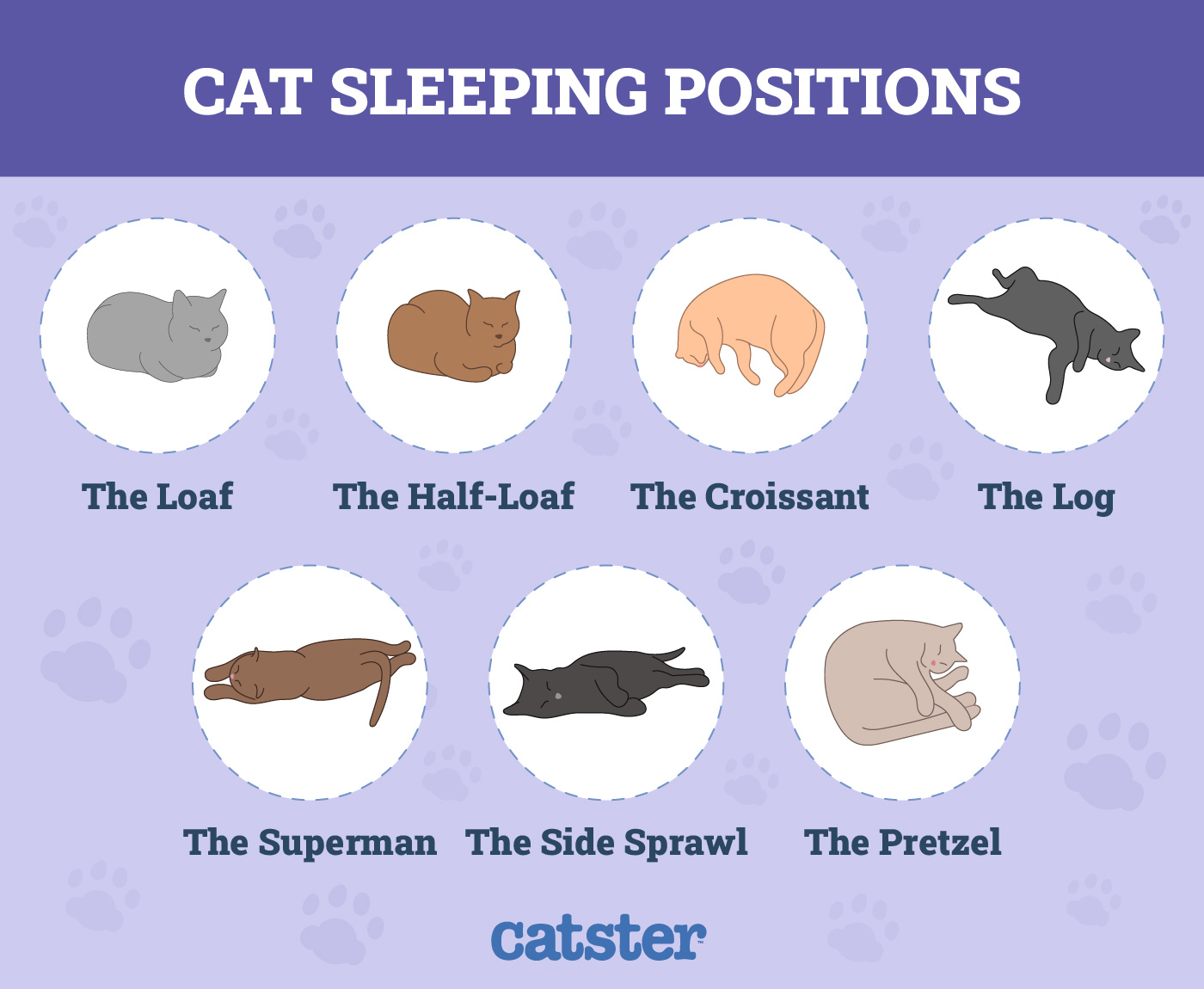
Every cat has their go-to position for a blissful snooze, but each cat chooses a position based on warmth and protection. Let’s begin with the most popular postures and the benefits of each one.
1. The Classic Loaf
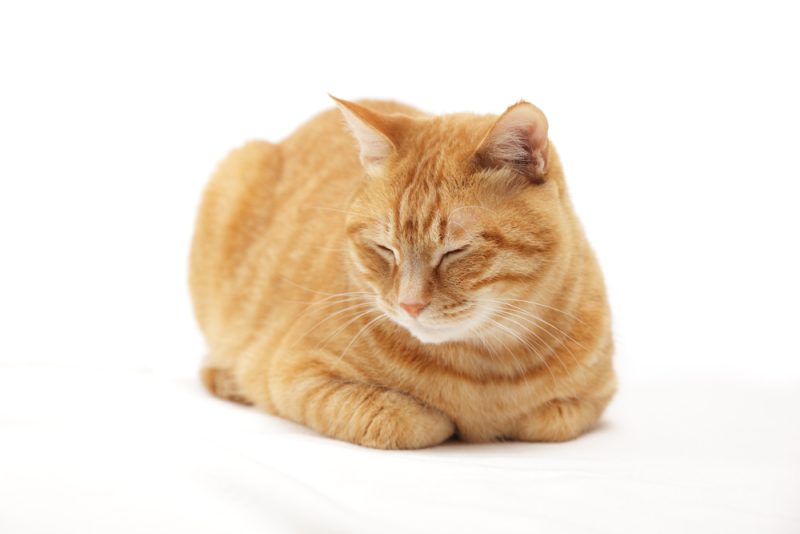
The classic loaf is one of the most popular cat positions, with no paws in sight. Cats like this position because it is cozy and traps their body heat. It also enables them to jump up quickly should they need to run away.
2. The Half-Loaf
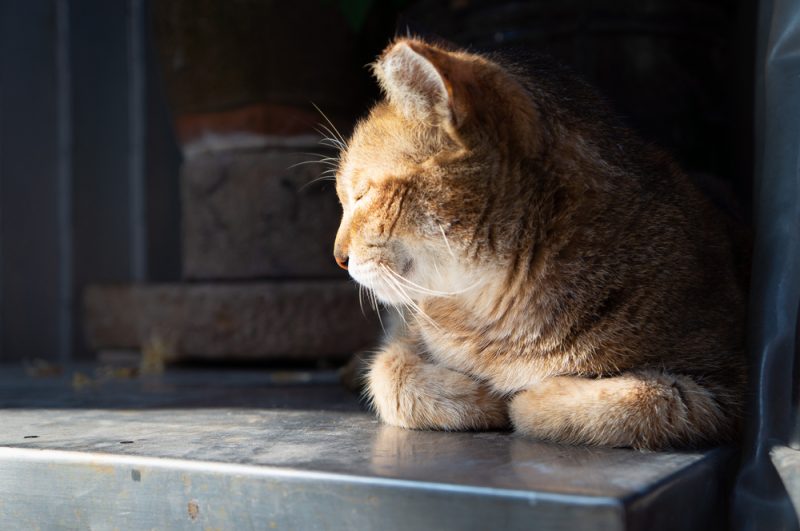
The half-loaf is like the classic loaf, except the front paws subtly poke out in front. This gives the cat a faster response time if they need to hide.
3. The Croissant
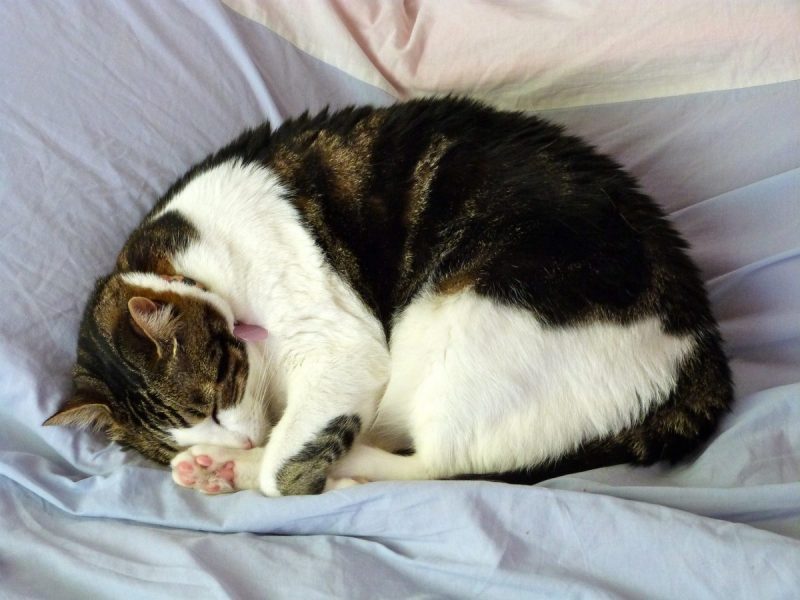
This position is when your cat turns into a delicious French bread. Cats like to curl into a tight crescent shape, almost into a ball, sometimes with the back paws touching the head. This is a great position for staying warm and protecting vital organs while enjoying a deep sleep.
4. The Log
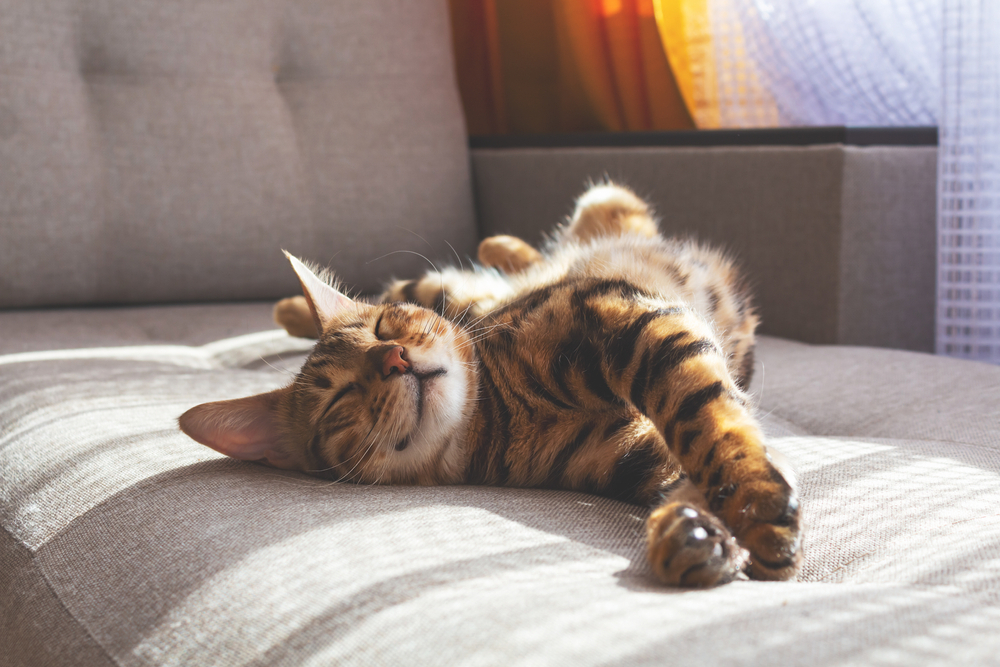
When your cat lies flat on their back with their legs stretched as far as they’ll go, they’re doing The Log. This position means your cat is care-free, confident, and comfortable. All the vital organs are exposed, but your cat believes they’re safe from harm.
As tempting as it is, you should avoid rubbing your cat’s belly when they’re in this position unless you’re positive they won’t mind.
5. The Superman
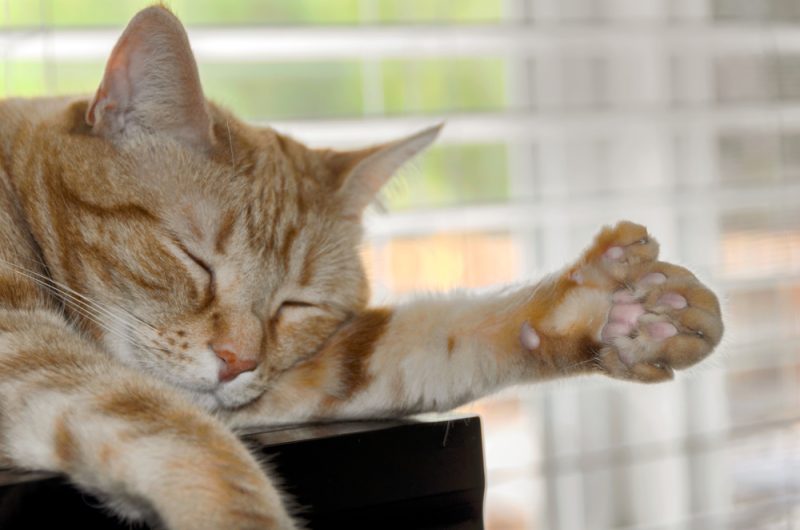
Also called splooting, this position is when the cat lies on their belly like they’re about to take flight.
Cats like this position for a variety of reasons. They can lay their bellies on cold floor tiles during the blistering summer months. Lying on a blanket or carpet like this during the winter means they are warm and cozy. In both cases, the vital organs are protected, and the cat can spring into action if needed.
6. The Side Sprawl
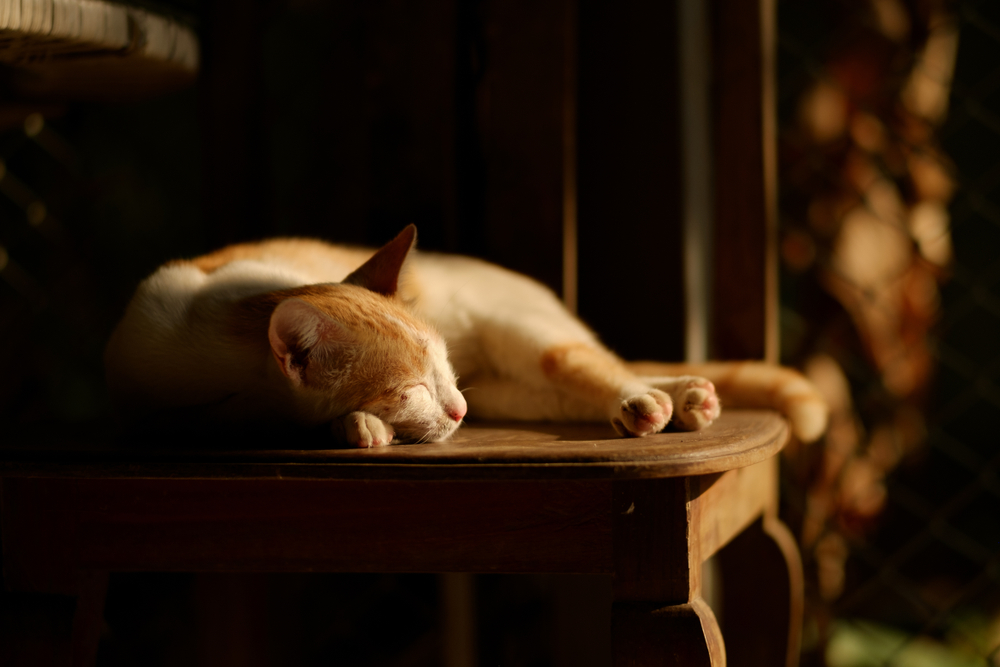
Cats that need to stretch their legs during a kitty snooze may enjoy the Side Sprawl. Sleeping felines will stretch their legs as far as possible and sometimes make biscuits along the way. If they have the space, cats will take full advantage of the Side Sprawl.
We find that cats that enjoy personal space tend to be side sprawlers, compared to the cats that prefer close croissant cuddles.
7. The Pretzel
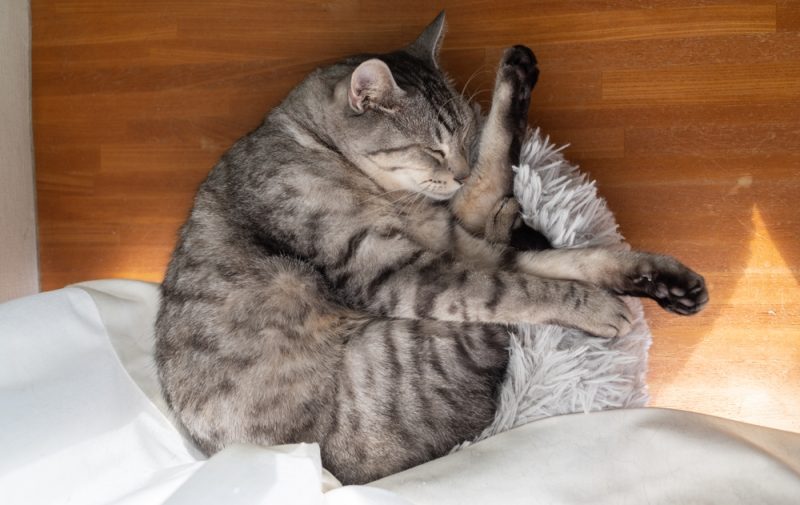
Also called The Contortionist, this position exhibits a cat’s natural flexibility. It may not look comfortable, but cats can comfortably twist their bodies into fuzzy pretzel shapes.
Cats typically lie on their side to do the pretzel, but they can be in any position they want.
8. The Faceplant
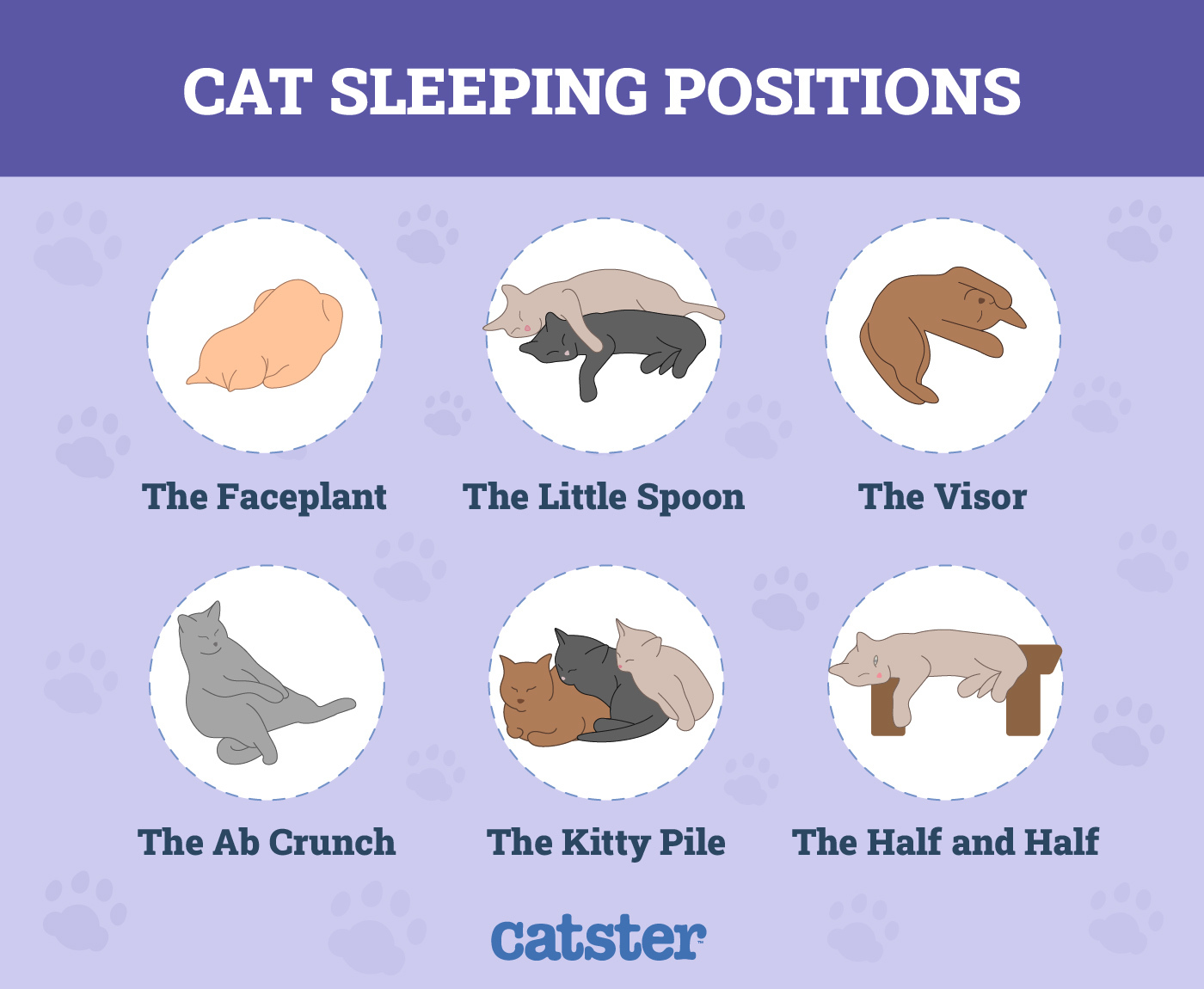
Cats in the Classic Loaf or Half Loaf positions may nod off to the point that they faceplant into the ground, head first. It’s an odd sleeping position, but it works. Cats will opt for loafing positions when they crave security, but sometimes drowsiness wins, and their noggin touches the ground.
9. The Little Spoon
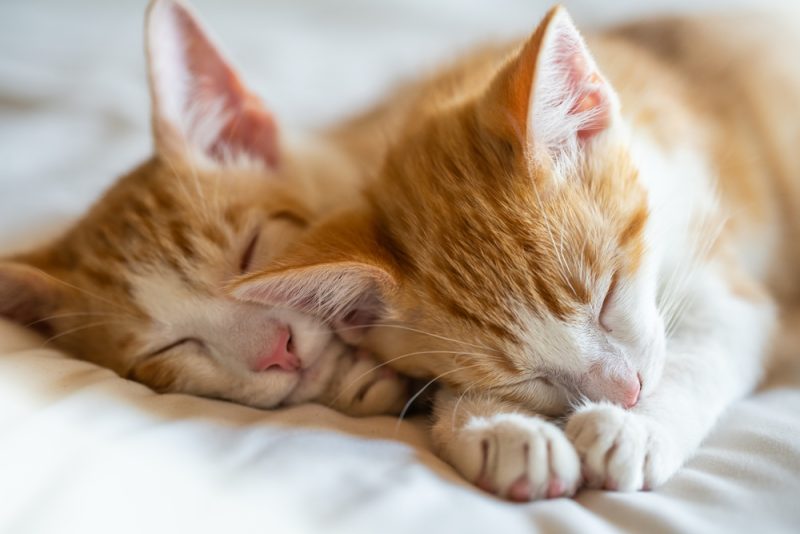
Is your kitty a snuggle bug? Some cats always want a sleeping buddy and prefer to be the little spoon. Cats may choose their owner, the dog, or another cat to snuggle next to. Any will work as long as there’s another heartbeat next to your kitty.
10. The Visor
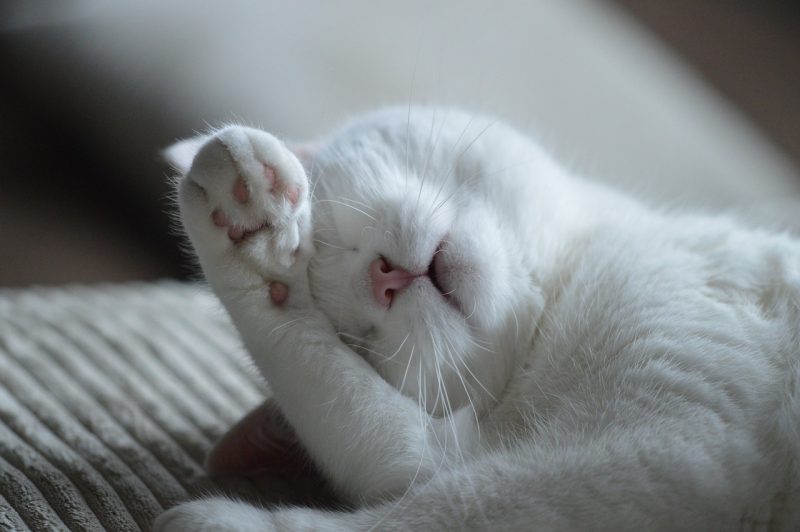
Some cats will cover their eyes with their paws to sleep! These cats are typically already in a side plant or croissant position, so their front paws can easily block their eyes. This sleeping position is adorable, to say the least.
11. The Ab Crunch
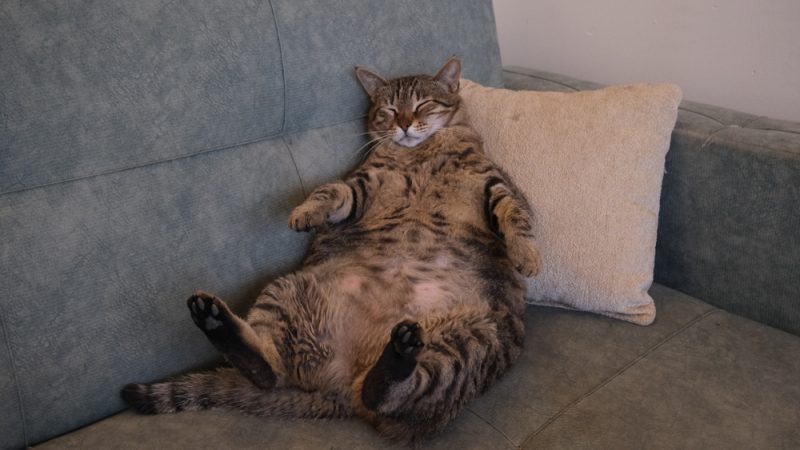
It’s called The Ab Crunch, but cats aren’t walking away with beautifully sculpted abs in this sleeping position. Cats sometimes fall asleep with their backs slightly elevated, giving the illusion that they were working out before they dozed off.
12. The Kitty Pile
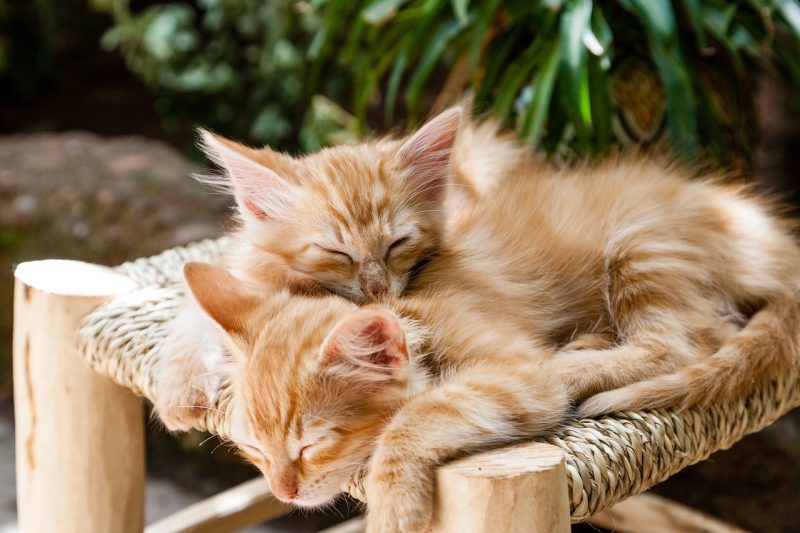
One of the first behaviors kittens learn is to pile on each other for maximum comfort and warmth. Some cats continue with this behavior as adults, usually close-knit siblings. Unrelated cats will do the same, especially if they’ve known each other their entire lives, but you see it most frequently with siblings.
13. The Half and Half
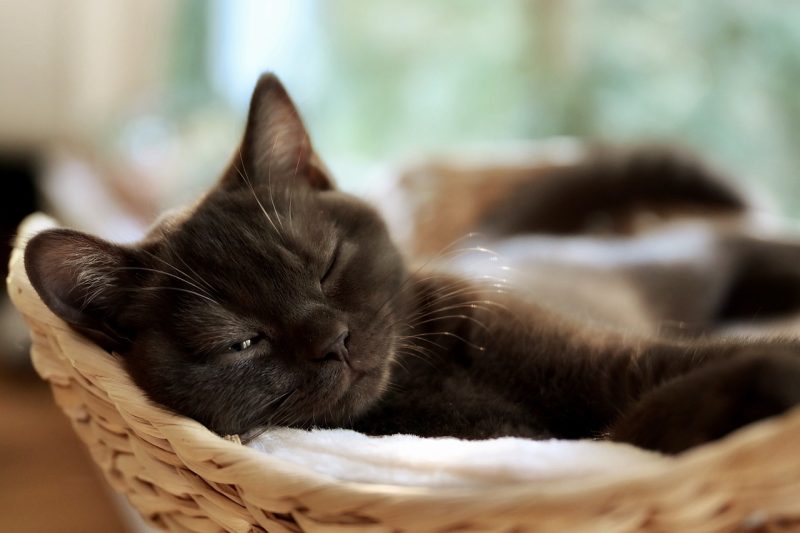
At some point, you’ll notice your cat sleeping with their eyes partially open. It’s a little creepy but completely normal.
Like humans, cats have sleep phases, so some periods of sleep are deeper than others. Felines can sleep with their eyes slightly open when casually catching a few ZZZ’s and not entering dreamland. This enables them to stay on alert if needed.
A cat also has a third eyelid in the inner corner of each eye, which offers protection even when sleeping. The third eyelid may be more easily visible when the outer eyelids are only subtly open, so your cat can rest.
Where Do Cats Like to Sleep?
Their unique flexibility enables cats to squeeze into spaces most humans and dogs can’t reach. Here are some neat places you’ll often find your cat snoozing.
1. In Their Bed
Of course, this is only if they have a bed they love and simply cannot get enough of!
Our Favorite Cat Bed
- HAPPY COZY CATS - Your kitty will bask in luxurious sherpa-lined comfort while feeling warm, safe,...
- MODERN DESIGN - Contemporary styling with upholstered fabric construction; just like your human...
- WARM FLEECE LINER - Self warming, thick sherpa fleece with microfiber trim.
Cats sleep away majority of the day so finding a bed thats supportive, warm and secure is key. Most cats find the modern design of the Hepper Nest Bed irresistible making it a practical option if your looking for a rest spot your cat will use consistently. Its supportive and caters to felines of all ages, sizes and ailments. The portability means that your cat can nap wherever you go - your desk, couch, side table or even your bed. Learn more about the heavenly Nest here.
At Catster, we’ve admired Hepper for many years and decided to take a controlling ownership interest so that we could benefit from the outstanding designs of this cool cat company!
2. On Your Chest
Nothing beats a purring cat resting against your heartbeat. Cats love spending quality time with their owners, and lying on your chest is one way to feel connected with the one who offers food and protection. Speaking of food, your chest is the perfect pawing zone when the clock strikes kibble time.
3. Crammed in a Box
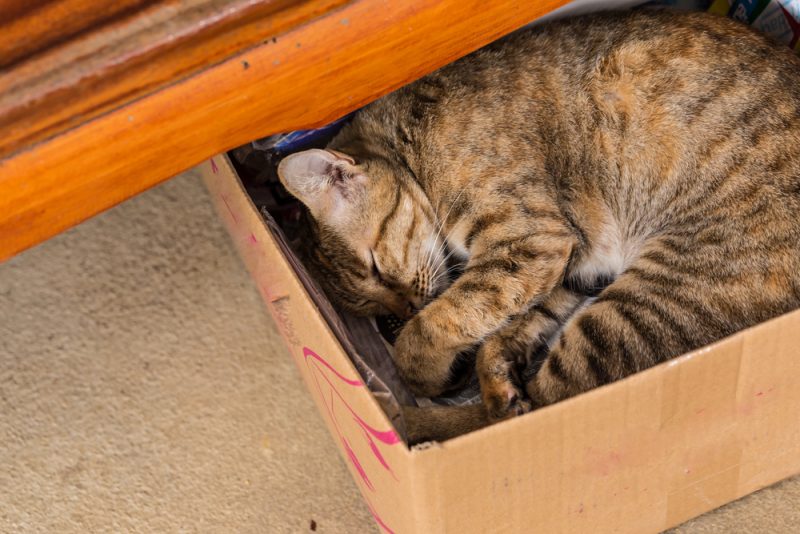
Thank you, Amazon, for providing the world’s cats with sleeping quarters. Cats love boxes simply because they offer security and protection. They’re also fun to hide inside while they wait for you to walk by so they can attack!
4. Under a Blanket
Blankets are warm, cozy, and safe. They act as a shield from other animals and loud noises. They also offer privacy in a way that cat beds and boxes can’t provide. But should you be worried about letting Fluffy under the covers? It depends. Adult cats wouldn’t put themselves into dangerous situations; however, with kittens, it is advised to keep a close eye on them and prevent them from going under heavy covers. You should also watch out not to squish them!
5. Between Your Legs
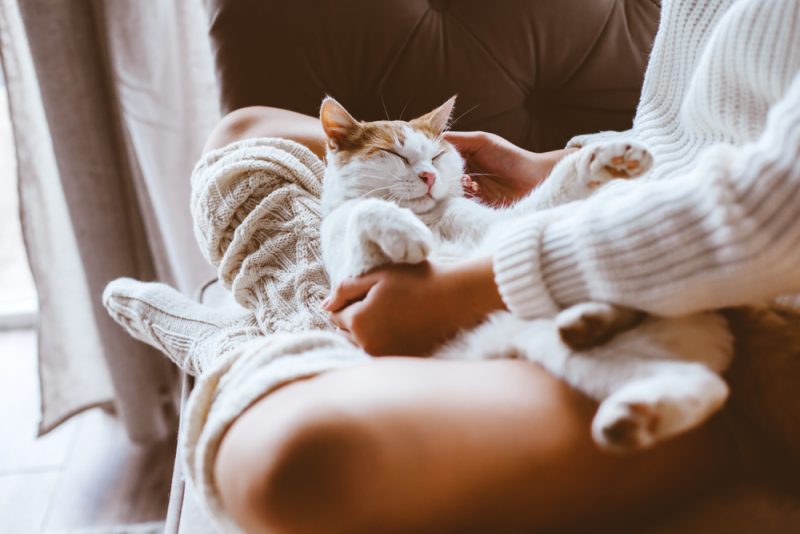
If you haven’t noticed, cats like to sleep in between things. The space between your legs is nice because it isn’t restrictive and you’re close by for casual cuddles. Plus, it’s nice and toasty!
6. On Your Head
Your head is warm, so your cat wants to squeeze in snuggle time. If you sleep with blankets over your entire body, your cat might choose to sleep on your head to have direct contact with you.
7. On Your Feet
Cats choose to sleep on their owners’ feet for several reasons. First, it’s another way for your cat to snuggle with you. Second, your feet keep them warm and offer your kitty an ideal place to enjoy a restful sleep.
When to Worry About Your Cat
There are a couple of times when you should be concerned for your cat. Call your veterinarian for further instructions if you notice your pet doing these things.
1. Head Pressing
Head pressing is when your cat firmly presses their head against a wall or object for no reason and for an extended period. Cats that head press generally keep pressing their heads over and over, moving along the wall until they’re stuck in a corner. It may look like your cat is sleeping against the wall.
You may notice other odd signs in your cat, like circling and falling over, disorientation, behavior changes, blindness, tremors, and seizures. This isn’t the same as a cat rubbing their face on yours, nor is it the same as head bonking, which are normal behaviors seen in a healthy, happy kitty.
Unfortunately, head pressing is a serious medical issue related to the central nervous system, and it should be evaluated immediately.
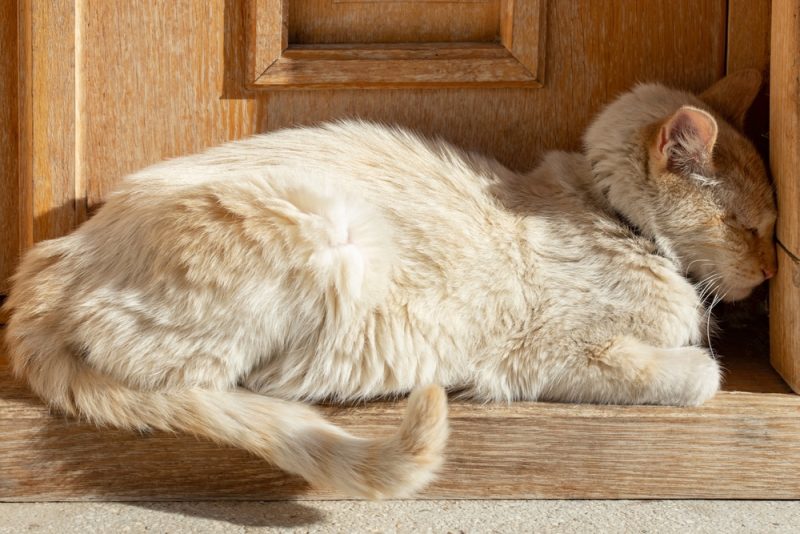
2. Sleeping in the Litter Box
Sleeping in the litter box can stem from various causes, but the most common ones are illness and fear. Some cats may also do it due to boredom or frustration. Regardless, it’s best to first get your veterinarian to rule out more serious medical causes for this behavior.
Cats will sit in their litter if they feel threatened, frightened, and unsure of their surroundings. The litter box is full to the brim of their scent and is usually located in a quiet place, so it feels secure.
Other times, cats sit in the litter box if they feel crummy, usually from UTIs and other urinary or digestive issues. Senior cats suffering from arthritis or dementia may be found in the litter box because they struggle to walk to or find it, or they may have toilet accidents outside of the box.
If your cat has not used the litter box for sleeping before or they are showing any signs of illness, such as straining, not eating, or being lethargic, get them checked by your vet as soon as possible.
Conclusion
Cats are unique little critters with weird sleeping positions. For many, the Classic Loaf or Croissant is their go-to for a good night’s sleep. But a cat’s flexibility enables them to sleep in all kinds of positions. Which does your cat like the most?
Related Reads:
- How Do Cats Fall Asleep So Fast? Feline Sleep Cycle Explained
- How Many Hours Do Kittens Sleep? Early Habits & Behaviors Explained
- Do Cats Like Being Squished? Our Vet Answers & Explains Feline Behavior
Featured Image Credit: hapibu, Pixabay

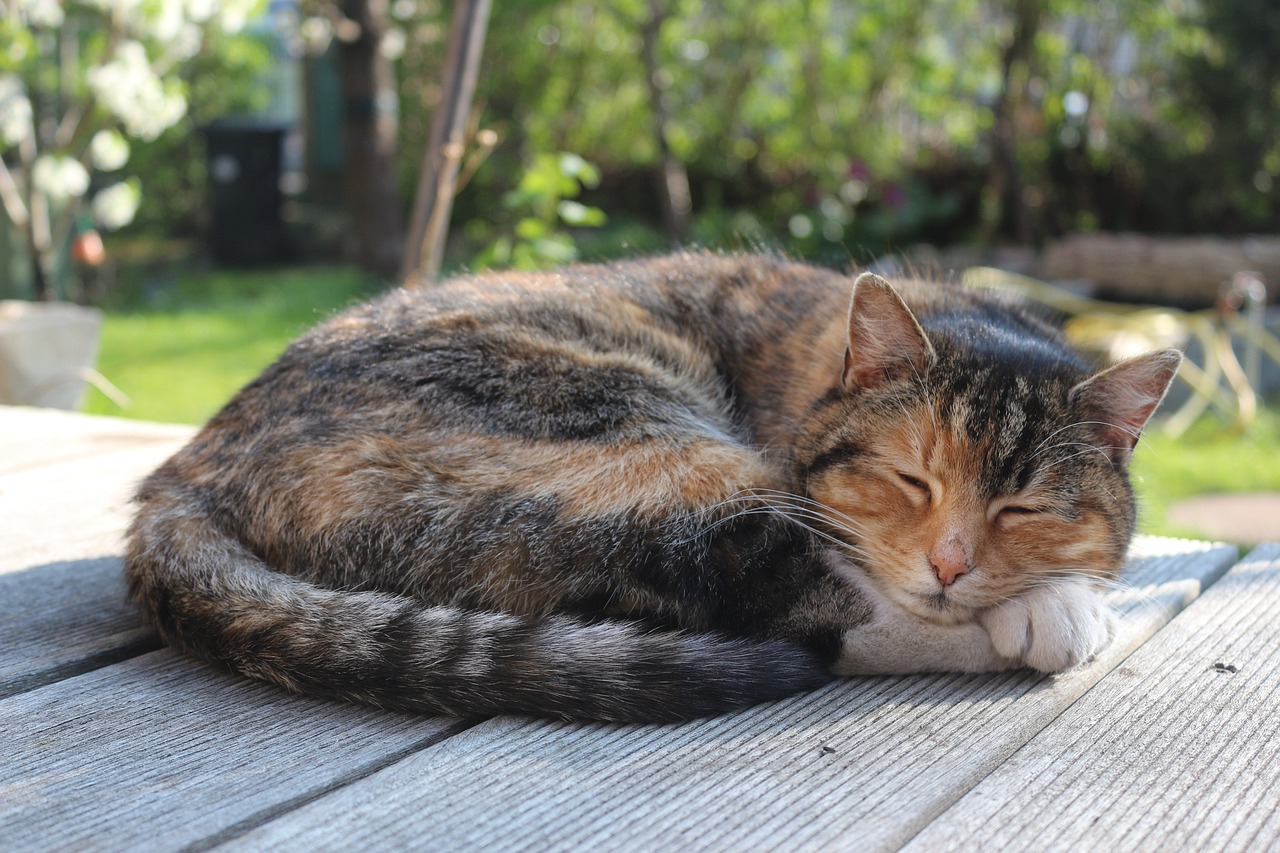
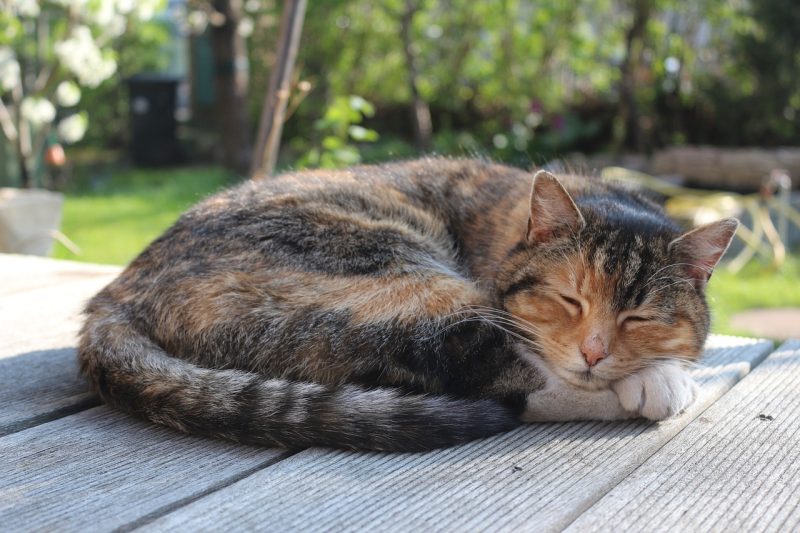




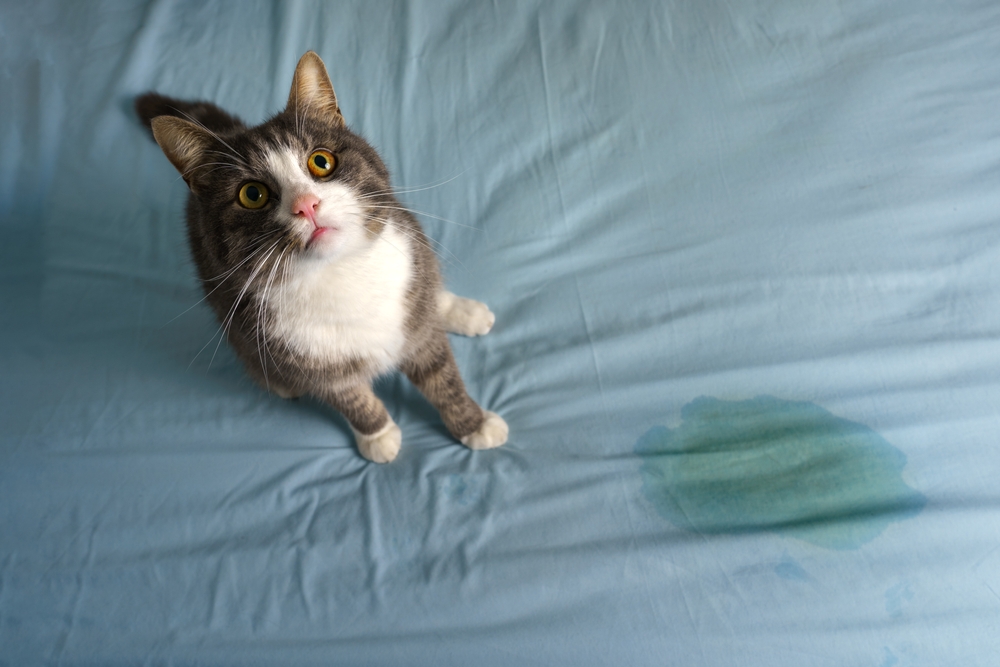
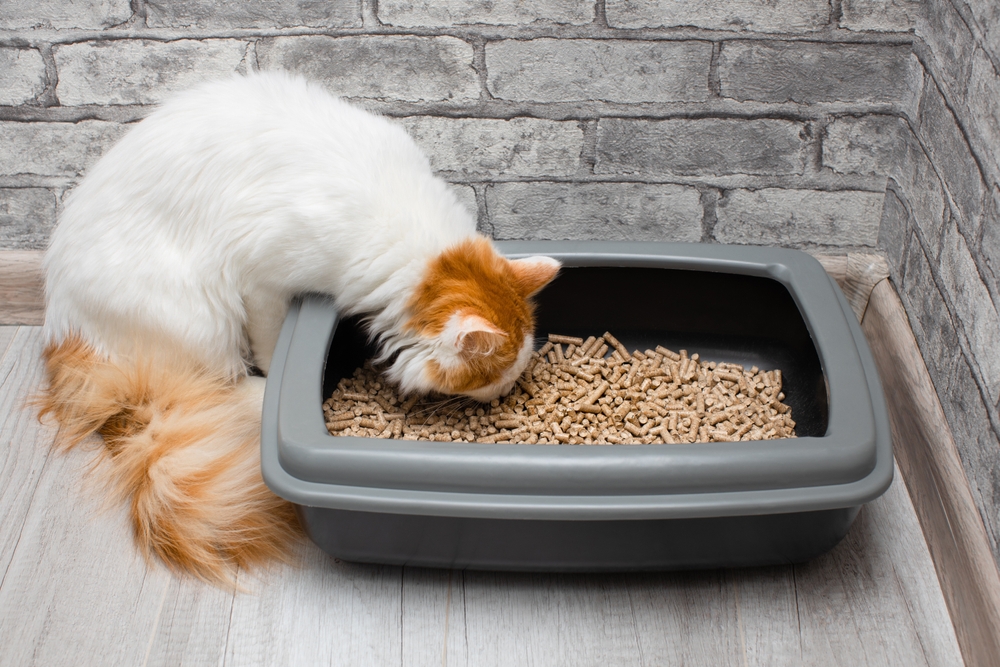
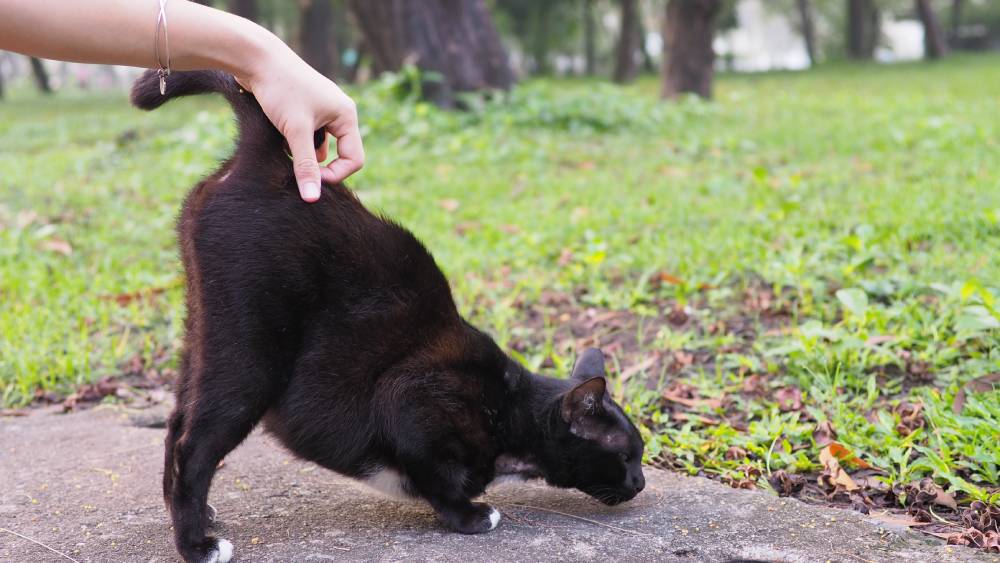


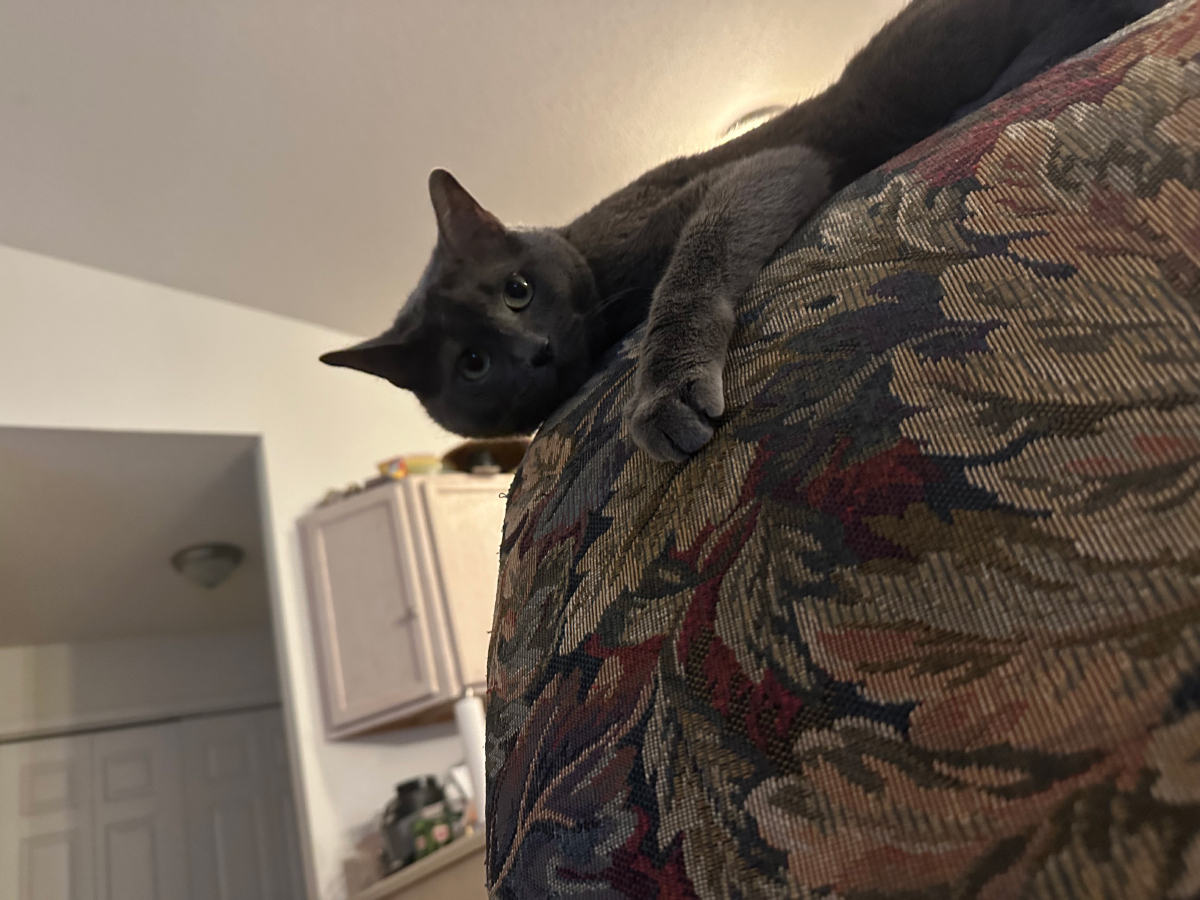
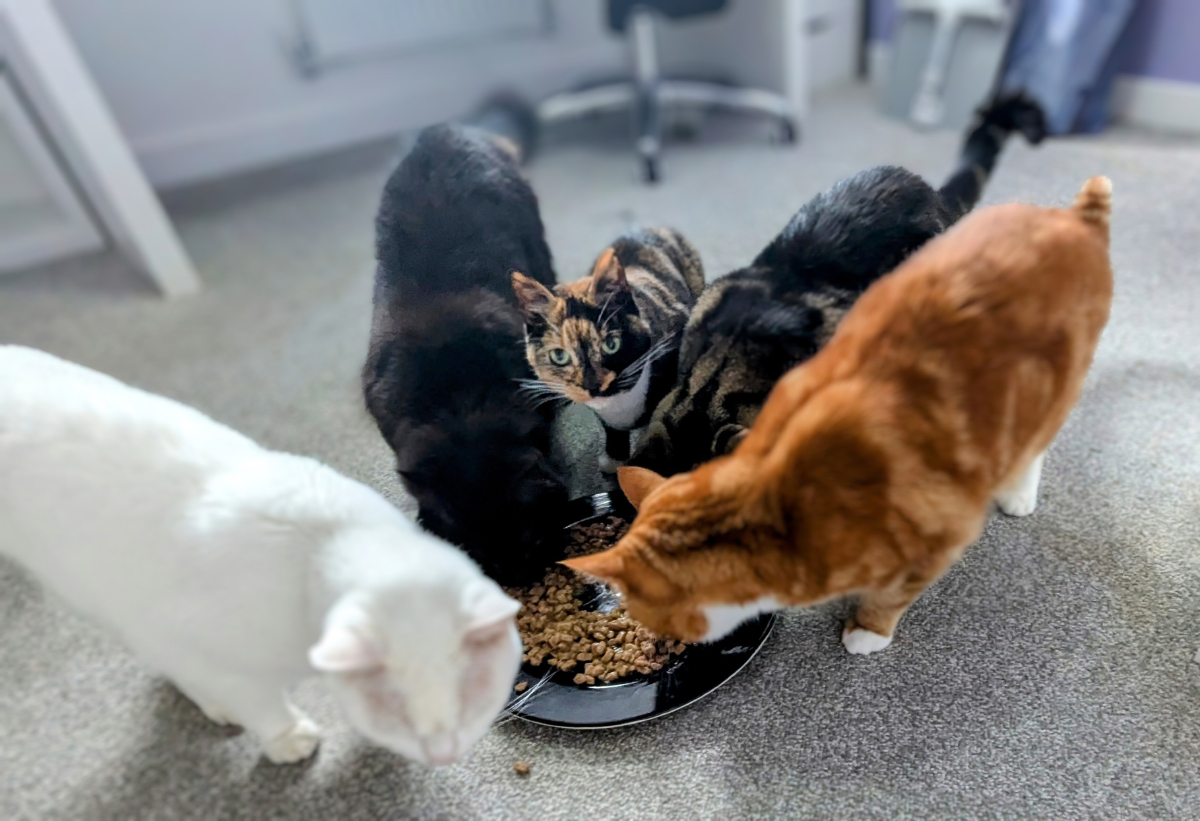
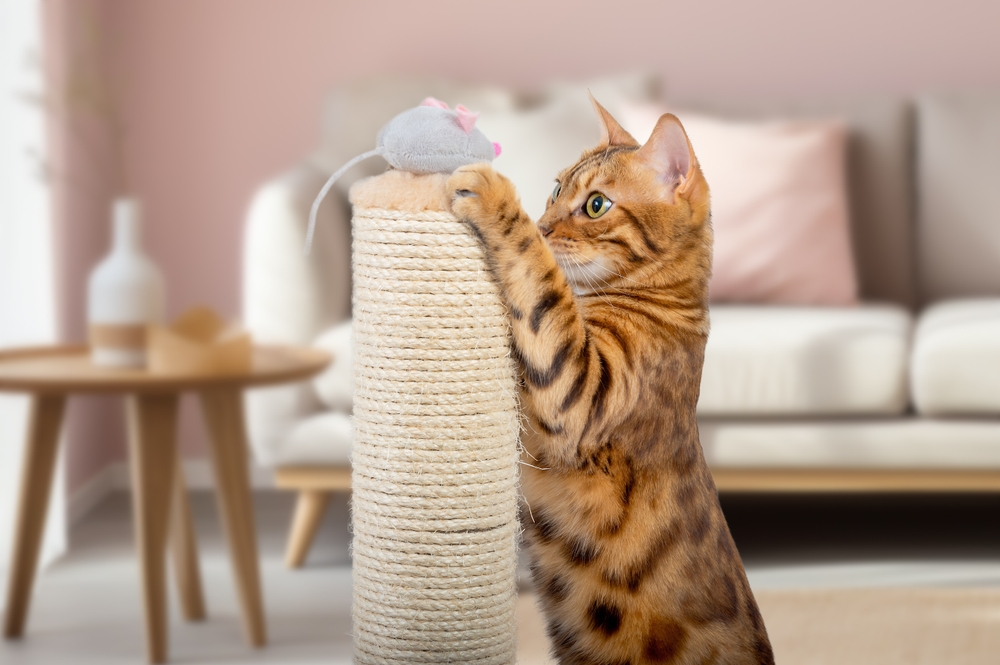

Could I ask a question about my cats (aged 19 months)? Bruno, who is hairy and quite a lot bigger than Sylvie, keeps lying on her at night and completely covering her face. He sends her into a kind of trance by licking her face, and then lies over it totally. Twice I've moved him and she seems to 'come round' with a start, and the second time she started panting through her nose. Is it possible that he could smother her in her sleep, without her knowing she needs to move?
Hi Jo N, Thank you for your comment, it is very unlikely that the cat will purposefully try to hurt the other cat. However, given the size difference that you describe, the smaller cat not to be able to move when needed. If you think your cat’s safety is at risk please separate them.